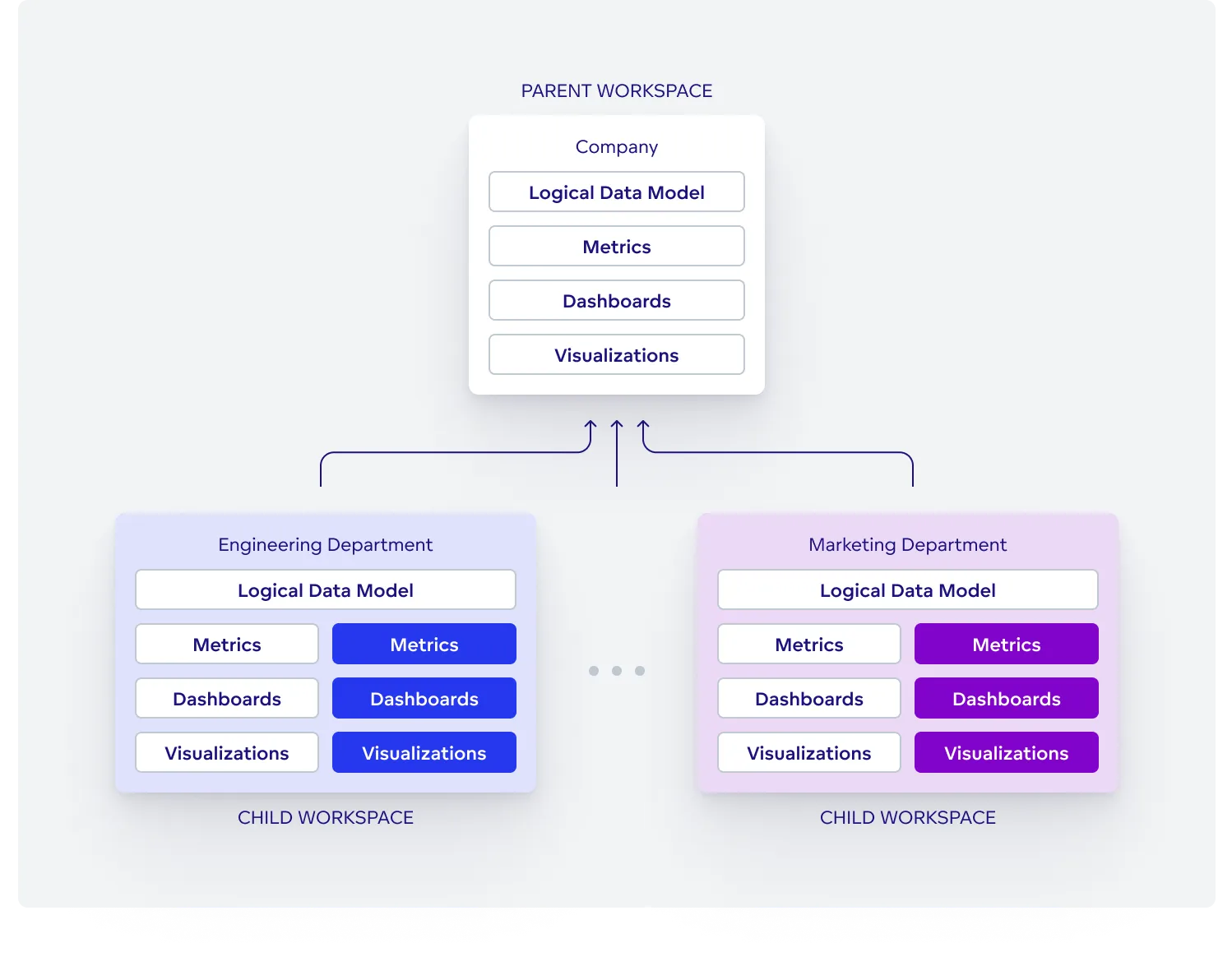Set Up Multiple Tenants
Multitenant analytics refers to an analytics platform built on a multitenant architecture, which sets it apart from other analytics solutions. Multi-tenant analytics delivers dashboards and reporting capabilities to multiple end users, also known as tenants.
Tenants can be:
- Users and user groups outside your company who are related to your business (e.g., resellers, agents, franchise units, etc.)
- Customers (e.g., subscribers or client companies)
- Users inside your company (e.g., departments, global business units, or single users with specific needs)
Each tenant is given access to a dedicated workspace where they can analyze their data and view their dashboards.
While the workspace contains a data model, metrics, and dashboards, it contains only the data that is specific to a given tenant. This distinction is achieved through the use of two types of workspaces: the master workspace and child workspace.
The master workspace serves as a template for child workspaces. This workspace contains a data model, all metrics, and dashboards that can be shared with the connected child workspaces. No end users are given access to the master workspace.
The child workspace is tenant-facing. It is the space where end users work with their dashboards. The child workspace contains the data model, core metrics, and dashboards inherited from the master workspace. As we mentioned before, each child workspace contains different data. End users in the child workspace may create their own metrics on top of the ones provided by the master workspace and create their own dashboards — without affecting the master workspace.
Using this structure is an efficient way to create, scale, and manage standardized and agile reporting for a broad user base. On top of that, you can also allow end users to create their own customized dashboards and perform their own data and insight exploration.
This structure is especially common for delivering analytics to your own customers or end users outside your organizations (e.g., business partners).
